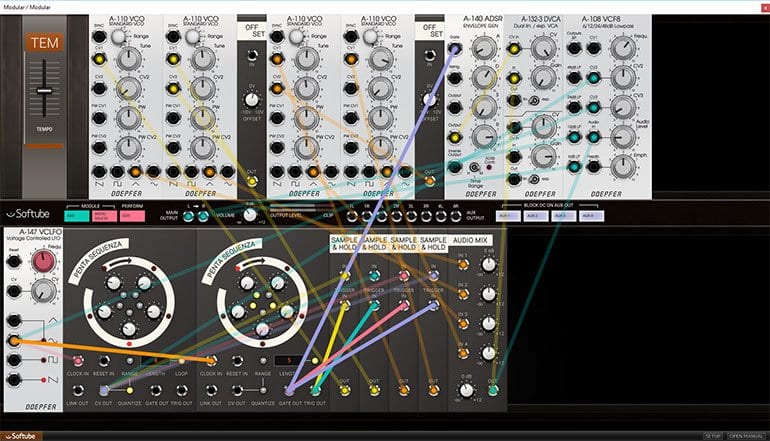

Softube has added the option to enable a release stage that affects both envelopes, and this uses the envelope’s decay time as a release time also.

The filter has its own dedicated ADS (attack, decay, sustain) envelope, as does the amp section. The Model 72’s filter is a 24dB/octave low-pass affair that can, like the Minimoog’s, achieve self-oscillation.

Modular softube free generator#
The oscillators are complemented by a noise generator that can be switched between white and pink noise. This is especially useful on oscillator three, which can be used as a modulation source and, for this reason, can also be switched to operate at a fixed frequency. All three oscillators can have their octave switched from -2 to +2, and have a low-frequency mode. The third oscillator replaces the sharkfin waveform with a reverse saw wave. The first two oscillators share the same set of six waveforms: triangle, sharkfin (similar to a saw wave), saw, square, pulse and narrow pulse. Beside aesthetic difference, there are more controls than expected because Softube has made some changes to the classic Minimoog design, adding functionality that wasn’t present in Moog’s masterpiece.įor those unfamiliar with this vintage icon, the instrument is a three-oscillator monophonic subtractive synthesizer. Still, a cursory glance at Model 72 leaves no doubt that the “vintage monophonic synthesizer” that the literature refers to is the Minimoog.Ĭloser inspection reveals that the Model 72 is more than a direct copy of the Minimoog. Softube goes to great lengths to avoid mentioning the presumably licence-fee-inducing Minimoog name. More specifically, we’re told the source synth in question was produced in September 1972, hence the Model 72 name. The Model 72’s marketing literature tells us that the instrument has been modelled from a legendary vintage monophonic synthesizer introduced in 1970. Which brings us to the subject of this review, Softube’s new Model 72 synthesizer and effects plug-in for VST, AU and AAX-compatible hosts.


 0 kommentar(er)
0 kommentar(er)
